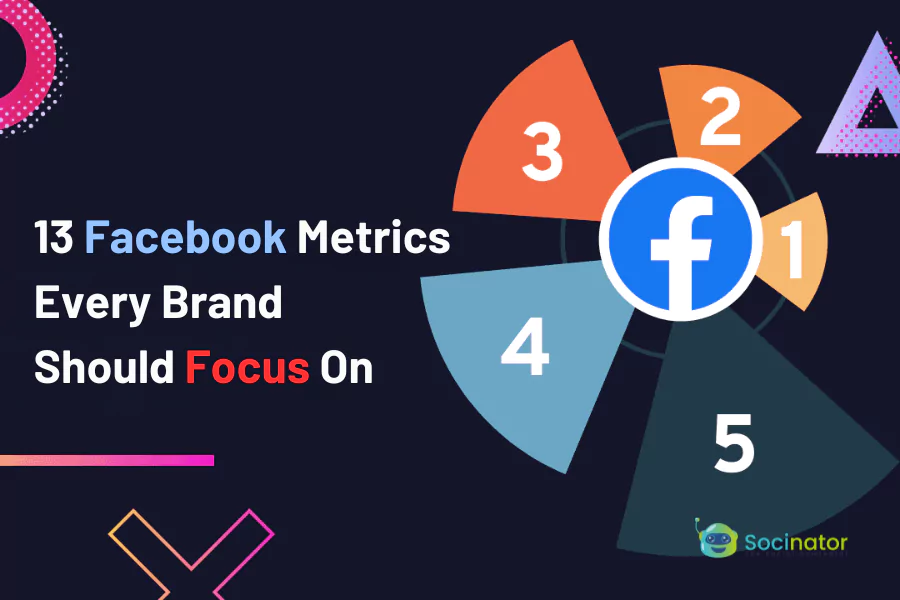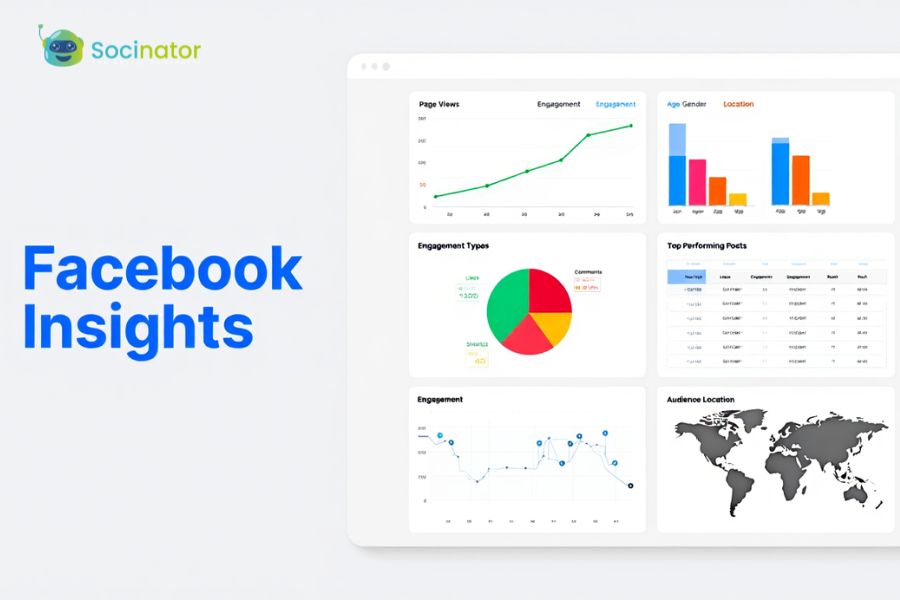While new platforms emerge regularly, Facebook metrics will always remain crucial to understanding the effectiveness of your content on the world’s largest social network. With over three billion monthly active users, Facebook is still a powerhouse for marketers, offering unmatched access to user data and precise targeting capabilities.
Success on this platform, however, depends on tracking the right metrics. Meta’s updates have shifted the focus from superficial numbers like likes and followers to more impactful data points such as engagement, views, and conversions. These insights allow marketers to understand what resonates with their audience and refine their strategies for better results.
In this blog, we’ll break down the 13 key Facebook metrics you need to track to optimize your campaigns. Discover how the data will help you achieve your marketing goals, from engagement rates to conversion tracking.
Listen To The Podcast Now!
Why Analyzing Facebook Metrics Matters?
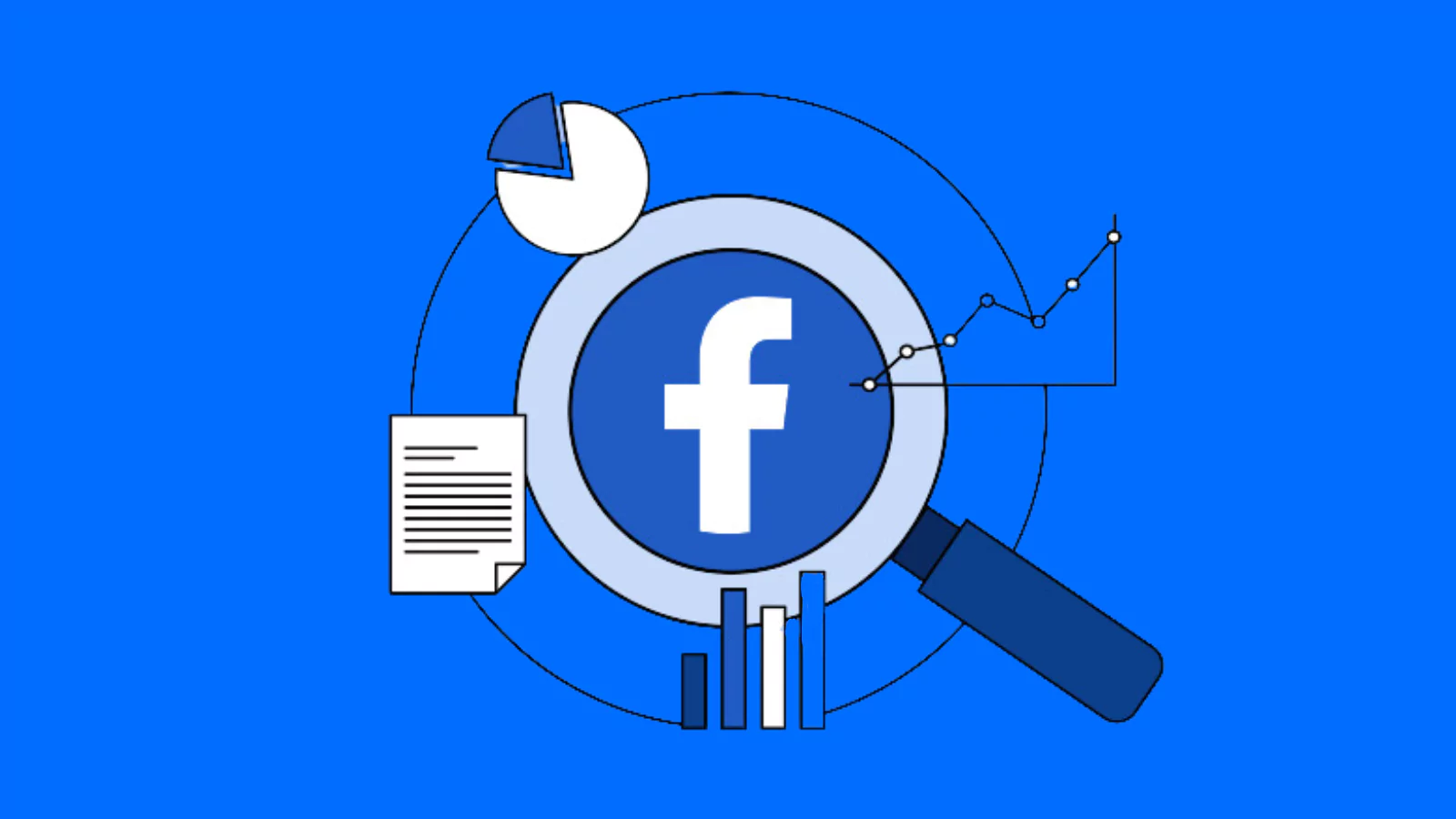 Many reasons motivate people to use social media, and Facebook metrics give us valuable insight into those behaviors. According to Pew Research, 93% of users visit Facebook to stay connected with friends and family. Beyond that, many use it to explore product reviews and recommendations (37%), stay updated on the news (37%), or follow sports and pop culture trends (36%).
Many reasons motivate people to use social media, and Facebook metrics give us valuable insight into those behaviors. According to Pew Research, 93% of users visit Facebook to stay connected with friends and family. Beyond that, many use it to explore product reviews and recommendations (37%), stay updated on the news (37%), or follow sports and pop culture trends (36%).
While these general trends paint a picture of user behavior, your target audience might engage differently. Are your followers interacting because you post at the correct times? Or is it due to other factors like compelling visuals or relevant content? By monitoring and analyzing the right Facebook metrics, you gain insights into what drives engagement and can adjust your content strategy to match their preferences.
Focusing on these metrics also helps you evaluate campaign performance. Whether it’s understanding the success of your Facebook Lives, assessing engagement in your brand group, or determining the impact of specific posts, tracking the most valuable metrics ensures you stay ahead in a competitive landscape.
What To Consider Before Tracking Facebook Metrics?
![]() Before diving into Facebook analytics, it’s crucial to approach tracking with intention. It does become very tempting to track every piece of data available, but not all information holds equal value. Take a step back and ask yourself: Why am I tracking this?
Before diving into Facebook analytics, it’s crucial to approach tracking with intention. It does become very tempting to track every piece of data available, but not all information holds equal value. Take a step back and ask yourself: Why am I tracking this?
Your Facebook metrics should align with your specific marketing goals. Doing so helps you measure the true ROI of your efforts. For example, if your goal is to increase brand awareness, metrics like reach and impressions should be a priority. Alternatively, if you’re working on audience targeting, demographic insights, and engagement rates will provide more value. Tracking everything without a clear focus can lead to data overload, complicating your strategy and clouding your successes.
By identifying the key Facebook metrics that matter most for your brand, you’ll have a clear direction for your strategy. This intentional approach allows you to avoid analysis paralysis and quickly extract actionable insights that drive results.
Key Facebook Metrics To Monitor For Business Success
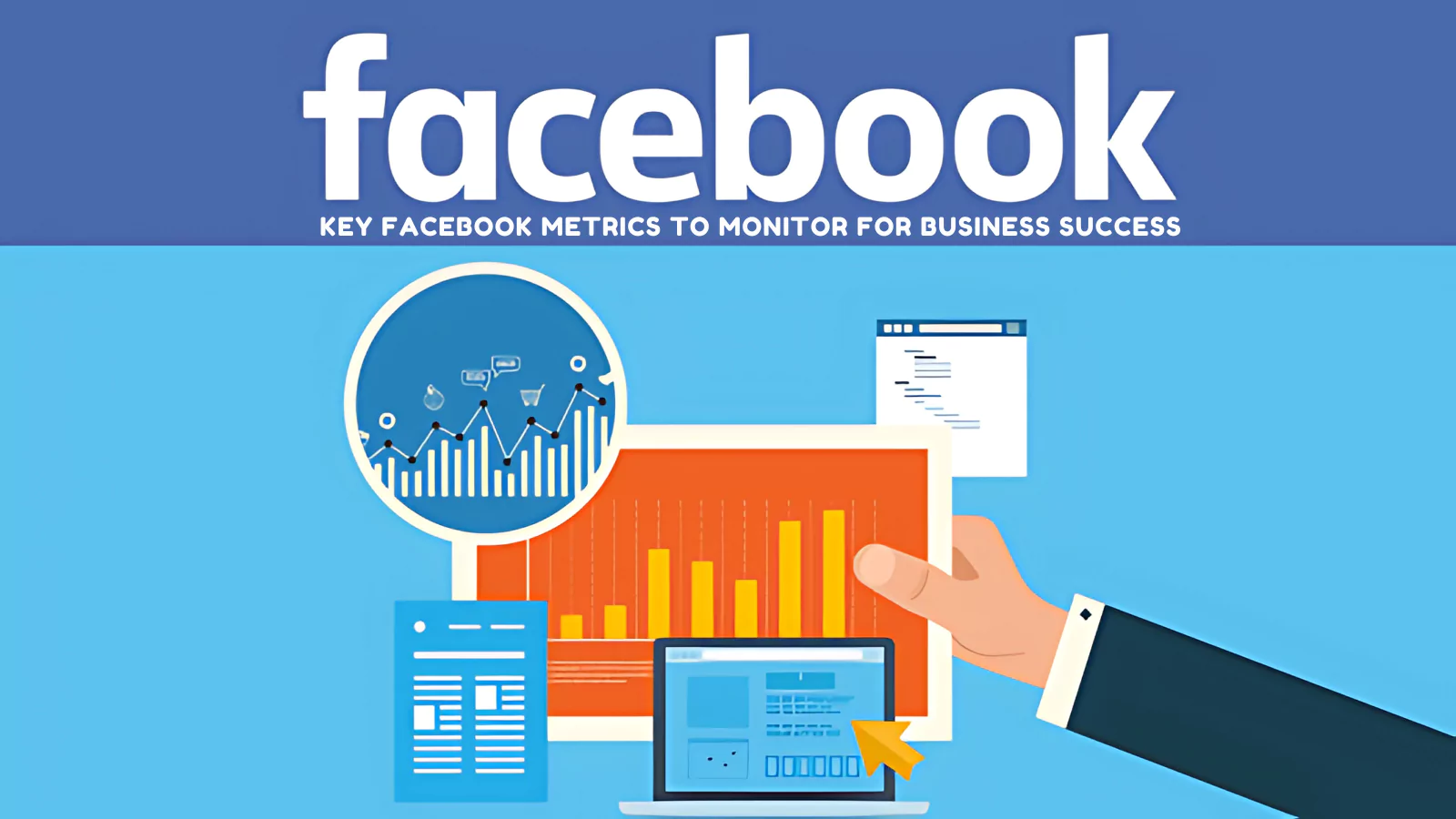 When running Facebook campaigns, it is important to keep track of various metrics to measure performance and refine strategies. These metrics provide valuable insights into how well your content is resounding with your audience, whether it is driving engagement, conversions, or brand awareness. By monitoring these key performance indicators (KPIs), businesses can adjust their approach, maximize ROI, and create more effective campaigns.
When running Facebook campaigns, it is important to keep track of various metrics to measure performance and refine strategies. These metrics provide valuable insights into how well your content is resounding with your audience, whether it is driving engagement, conversions, or brand awareness. By monitoring these key performance indicators (KPIs), businesses can adjust their approach, maximize ROI, and create more effective campaigns.
-
Reach
Reach represents the total number of unique users who have seen your content at least once. It’s a critical metric to gauge the overall visibility of your brand. By monitoring Facebook reach, you can evaluate how widely your content is and assess the effectiveness of your content in reaching new audiences. A broader reach often indicates that your content is catching the attention of a larger audience, which is essential for increasing brand awareness and growth.
-
Impressions
Impressions measure the total number of times your content is displayed to users, regardless of whether they click or interact with it. This metric offers insights into how frequently your content is being exposed to users on Facebook. While impressions don’t account for user interaction, they are vital for understanding how often your message is being seen. A high number of impressions can help reinforce brand awareness, especially in paid campaigns where visibility is key.
-
Engagement Rate
The Facebook engagement rate measures how often people interact with your content, including likes, comments, shares, and other reactions, compared to the total number of impressions or reach. A high engagement rate signifies that your content resonates with your audience, encouraging them to interact. This metric is crucial for understanding audience interest and involvement with your brand. The more engagement your posts receive, the better you can assess which types of content drive meaningful connections with your target audience.
-
Click-Through Rate (CTR)
Click-through rate (CTR) is the percentage of users who click on a link within your content after seeing it. This metric is an essential measure of the effectiveness of your calls to action (CTAs). A higher CTR means that your audience finds the content engaging enough to take further action, whether visiting a website, signing up for a service, or purchasing a product. By optimizing your CTAs and ensuring your content aligns with user interests, you can improve your CTR and drive more valuable traffic.
-
Post Saves
Post saves refer to the number of times users save your posts to revisit them later. This metric is a strong indicator of the value and relevance of your content. When users save posts, it suggests that they find the information helpful or interesting enough to come back to in the future. Post saves are essential for long-form content, educational posts, or any content that users may need to refer to at a later time. It’s a clear sign that your content has made a meaningful impression.
-
Video Views
Video views track how many times your video content is played for at least three seconds. This metric is crucial for understanding how well your videos are performing in terms of viewer engagement. Video is one of the most powerful content formats on social media, and by monitoring views, you can determine if your videos are capturing attention. Analyzing video views can also help you understand which types of video content resonate most with your audience, whether educational, entertaining, or promotional.
-
Cost Per Result (CPR)
Cost per result (CPR) measures how much you spend on each specific outcome, such as clicks, impressions, conversions, or other actions tied to your advertising goals. This metric helps you assess the efficiency of your ad spend and determine whether you are getting the desired results for the investment. Monitoring CPR allows you to optimize your campaigns by adjusting targeting, creative, and budgeting strategies to improve the cost-effectiveness of your ads and maximize your return on investment (ROI).
-
Page Likes and Follows
Page likes and follows track the growth of your audience by measuring how many people like or follow your Facebook page. These metrics are directly tied to your brand’s popularity and overall reach. An increase in likes and follows indicates that users are interested in your brand and want to stay updated with your content. These numbers are often seen as a reflection of audience retention and loyalty, showing how well your content resonates with your target demographic.
-
Negative Feedback
Negative feedback tracks the number of users who hide your posts, unfriend/unfollow your page, or mark your content as irrelevant or annoying. While it’s natural for any brand to receive negative feedback, keeping an eye on this metric is essential for refining your content strategy. A high volume of negative feedback suggests that your content may not reach the audience’s expectations or interests. Monitoring and addressing negative feedback can help you adjust your approach to avoid alienating your followers.
-
Conversion Rate
Conversion rate measures the percentage of users who complete a desired action, such as making a purchase, marking up for a newsletter, or downloading a resource after interacting with your content. This metric is crucial for determining the effectiveness of your overall marketing funnel. A higher conversion rate means that your audience is not only just engaged with your content but is also taking the necessary steps toward becoming a customer. By understanding this metric, you can optimize your content, targeting, and CTAs to boost conversions and drive more sales.
-
Response Rate
Response rate tracks how quickly your brand responds to messages and comments on your posts. It’s a key indicator of how well you engage with your audience and provide customer service. In today’s digital age, fast response times are essential for maintaining customer satisfaction and trust. By ensuring timely responses, you can foster stronger relationships with your audience, encourage further engagement, and enhance your reputation for customer service.
-
Ad Frequency
Ad frequency is the average number of times an individual sees your ad. While repeated exposure can improve ad recall, high frequency can lead to ad fatigue, and users become annoyed or disengaged. It’s essential to monitor ad frequency to avoid oversaturating your audience with the same message. Adjusting the timing and targeting of your ads can help maintain audience interest and prevent ad fatigue, ensuring that your ads continue to perform effectively without overwhelming viewers.
-
Organic vs. Paid Performance
This metric compares the performance of your organic posts to that of your paid campaigns. By analyzing organic versus paid performance, you can make more informed decisions about your resources. Organic content is valuable for long-term engagement, while paid campaigns can offer quicker results and broader reach. By balancing both, you can optimize your content strategy and ensure that you are getting the most value from both organic growth and paid promotions.
Tracking and analyzing these Facebook metrics is crucial for refining your Facebook marketing strategy and improving campaign performance. However, to succeed in Facebook marketing, you need to be consistent with delivering your posts. For businesses seeking a more efficient way to handle the intricacies, tools like Socinator can automate certain aspects of social media management. These tool not only helps you provide valuable insights into engagement and performance metrics but also help you in optimizing your social media strategies with ease.
Socinator Features For Facebook Marketing Optimization
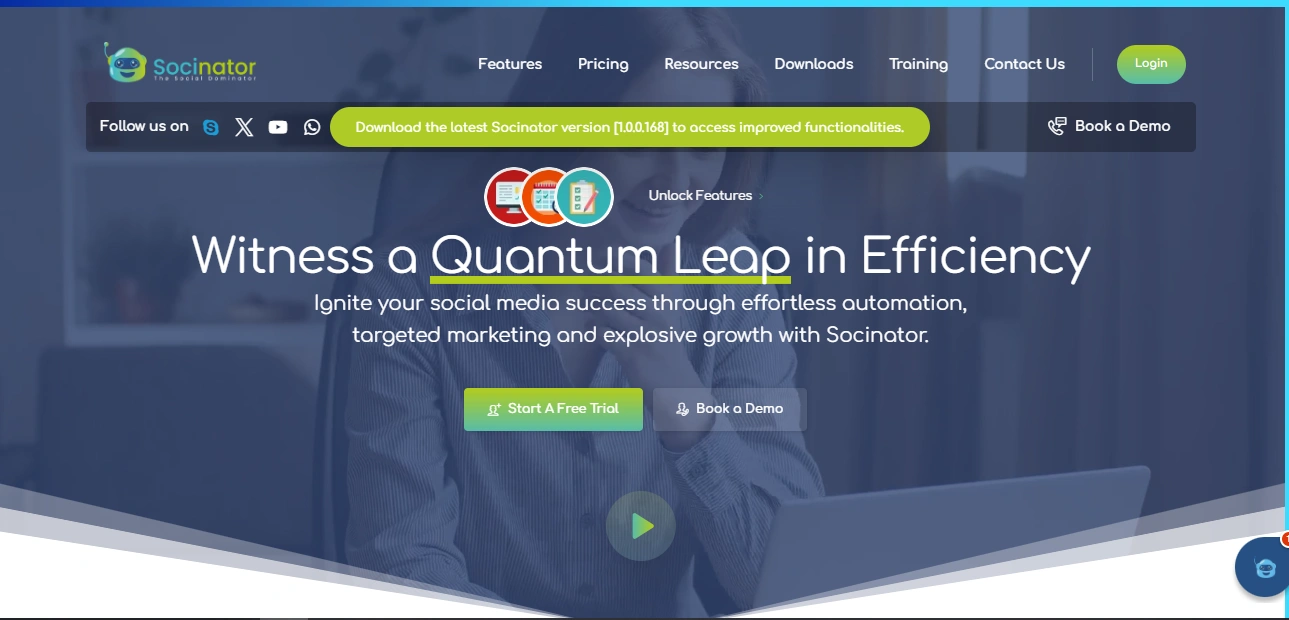 Socinator offers powerful tools to streamline Facebook marketing, automate tasks, and optimize key metrics like reach, engagement, and conversions. Here are some key features to enhance your strategy:
Socinator offers powerful tools to streamline Facebook marketing, automate tasks, and optimize key metrics like reach, engagement, and conversions. Here are some key features to enhance your strategy:
Automated Reporting and Analytics
Socinator’s Facebook automation tool automatically tracks and analyzes key metrics such as reach, impressions, engagement rate, and CTR, delivering real-time reports for easy performance monitoring and data-driven decisions.
Audience Targeting and Engagement Automation
Target specific audiences based on behaviors and interests while automating responses to comments and messages, improving engagement and response rates with Facebook automation.
Content Scheduling and Posting Automation
Schedule posts in advance for consistent delivery at optimal times, ensuring maximum visibility and engagement without manual posting.
Conversion Tracking
Track conversions like purchases and sign-ups to measure the effectiveness of your campaigns, helping you optimize for better results.
Ad Campaign Management
Manage Facebook ads from one platform, track performance metrics such as impressions and CPR, and optimize ad spending alongside organic content with the power of Facebook automation.
With Socinator, you can automate and optimize your Facebook marketing efforts, saving time while boosting performance. Whether for content scheduling, engagement, or conversions, Socinator provides all the tools you need to refine your strategy with advanced Facebook automation.
How To Transform Your Facebook Marketing Strategy With Facebook Metrics?
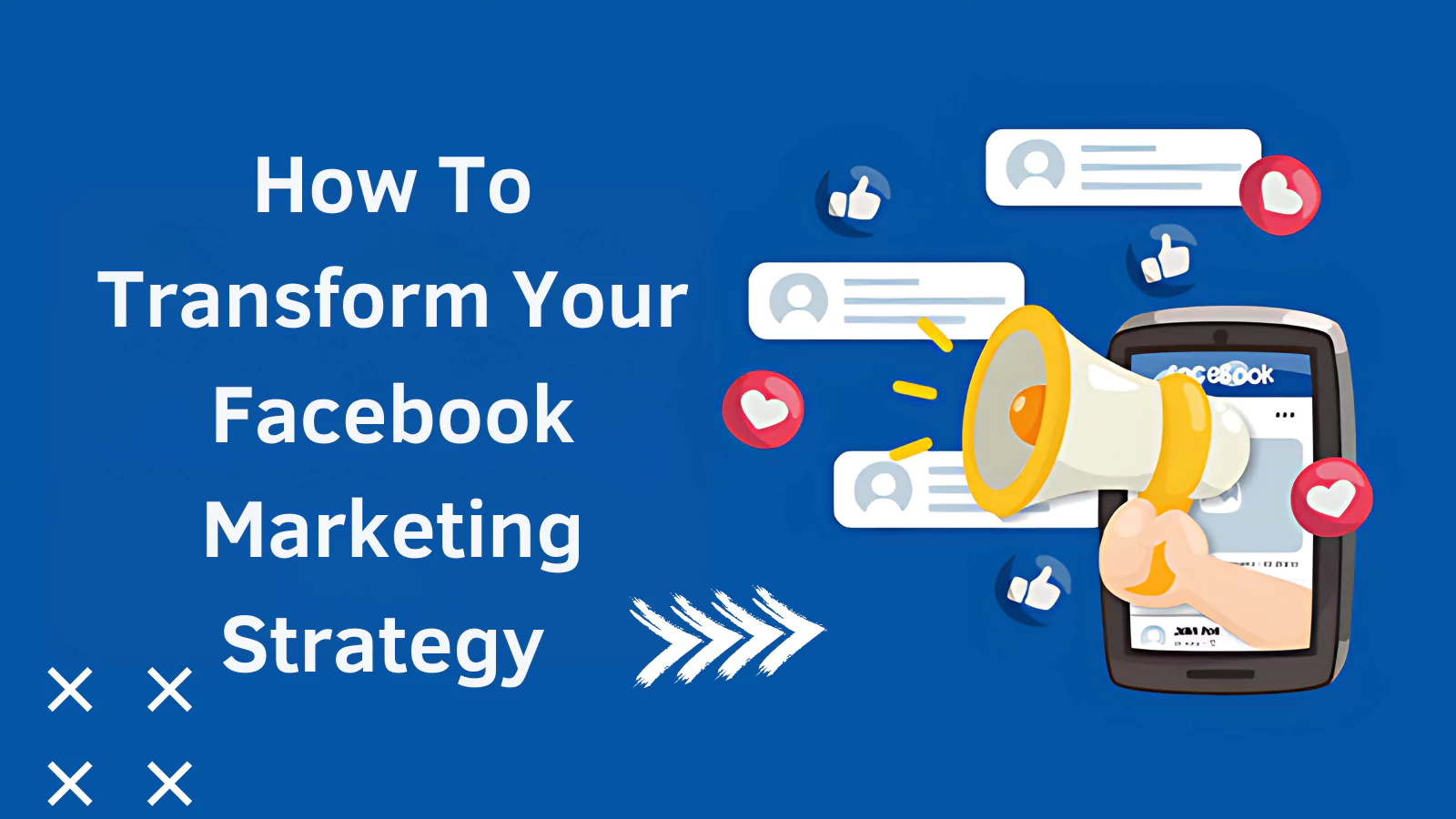 Facebook metrics aren’t just numbers on a screen but a blueprint for transforming your brand’s social strategy. By understanding and leveraging these insights, you can make data-driven decisions that keep your brand relevant and successful on Facebook.
Facebook metrics aren’t just numbers on a screen but a blueprint for transforming your brand’s social strategy. By understanding and leveraging these insights, you can make data-driven decisions that keep your brand relevant and successful on Facebook.
But how do you turn those numbers into actionable optimizations or new approaches that up-level your strategy? Here are a few tips to help you put that data into action.
Know Your Crowd
Facebook is a wealth of audience insights, from where they are located to which posts they’re engaging with most and how they’re talking about your brand or industry. These Facebook metrics help you tailor your content and ads to the right people.
You can use these insights to inform every aspect of how you engage with your audience. Through social listening, discover your audience’s interests and how they’re talking about your brand to improve the topics you post about or refine your social customer care. Even catch crises early on, so you can manage the situation from the start.
Refine Your Content Strategy
Then, you can take it a layer deeper. Facebook metrics offer a bird’s-eye view of what’s working and what’s not and enable you to dig into post-specific details. Engagement rates likes, shares, and comments tell you what types of content your audience loves. Is it videos, images, or text updates? By identifying your top-performing posts, you can refine your content strategy to give your audience more of what they crave.
For example, if you notice that behind-the-scenes videos garner the most engagement, then prioritize creating more of that content. This not only boosts interaction but also fosters a deeper connection with your audience because you’re personalizing the experience to their needs.
Optimize Your Ad Spend
In an age when marketing budgets are being slashed, you want to make the most of the ad spend you do get. Tracking ad metrics like click-through rate (CTR), cost per click (CPC), and cost per acquisition (CPA) helps you quickly evaluate the effectiveness of your Facebook ad campaigns.
For example, if you notice a high CTR but prospects are converting at a low rate on your landing page, it might indicate that your ad is compelling but your landing page needs improvement. Conversely, a low CTR could mean your ad creative or targeting needs tweaking.
Using Facebook metrics like these helps take the guesswork out of ad optimizations, giving you access to the data you need to make the right decisions quickly. And further enabling you to make timely adjustments that optimize your ad spend and maximize ROI.
Read More:
13 Kick-Start Ideas To Boost Your Reach On Facebook
Advance Your Business With Facebook Marketing Software.
Facebook SEO: The Ultimate Guide To Boost Your Brand
How To Measure Facebook Reach vs Impressions?
Wrapping Up
In conclusion, tracking and analyzing the right Facebook metrics is essential for optimizing your marketing strategy and achieving your business goals. By understanding metrics such as reach, engagement rates, and conversions, you can gain invaluable insights into your audience’s behavior and refine your content and campaigns accordingly. Whether aiming to increase brand awareness, improve conversions, or boost engagement, Facebook metrics provide the data-driven foundation to help you succeed.
By leveraging tools like Socinator, you can automate tracking and analyzing these metrics, saving you time and effort while maximizing your results. With the right approach to monitoring and optimizing your Facebook metrics, your brand can stay ahead in the competitive social media landscape and drive better performance across the board.
FAQ: Facebook Metrics
-
How can I measure the performance of my Facebook ads metrics beyond basic metrics?
To measure your Facebook ad performance comprehensively, you need to focus on key Facebook metrics such as engagement rate, click-through rate (CTR), and conversion rate. These metrics provide insights into how well your ads resonate with your audience and how effectively they drive user actions. Additionally, evaluating Facebook ads cost per impression helps assess the efficiency of your ad spend and whether your content is reaching the right audience.
-
What is the ideal Facebook ads cost per impression (CPI) for my campaigns?
The ideal Facebook ad cost per impression (CPI) can vary depending on your industry, targeting, and goals. However, a lower CPI generally indicates that your ads are cost-effectively reaching a large audience. You should monitor your Facebook metrics closely to ensure your CPI aligns with your campaign objectives, ensuring you’re maximizing your ROI.
-
How do Facebook metrics impact my campaign budget?
Facebook metrics like CTR, conversion rate, and cost per impression are crucial in determining whether you’re getting good value from your advertising budget. A high CTR and low cost per impression typically mean your ads are performing well, which may justify increasing your budget. On the other hand, if your metrics show poor engagement or high CPI, you may need to refine your targeting and creativity to optimize your ad spend.
-
How can I optimize Facebook ads cost per impression for better results?
To optimize Facebook ads cost per impression, focus on refining your targeting, improving your ad creative, and testing different formats. By narrowing down your audience to those who are more likely to engage, you can reduce your cost per impression. Additionally, analyzing Facebook metrics like engagement rate and conversion rate can provide insights into what is working and help adjust your strategies for better efficiency.
-
What are some common mistakes when tracking Facebook metrics?
One common mistake when tracking Facebook metrics is focusing solely on vanity metrics like likes or page views, which don’t always correlate with campaign success. Instead, prioritize actionable metrics such as conversion rate and Facebook ads cost per impression, which directly impact your ROI. Also, failing to track the right metrics for your specific campaign goals can result in misleading data, making it harder to optimize your strategy effectively.

